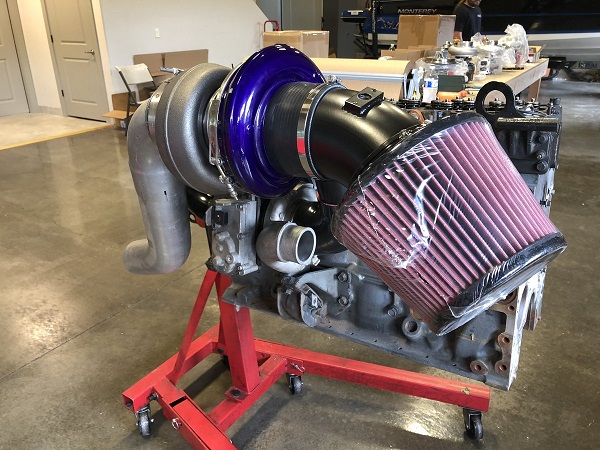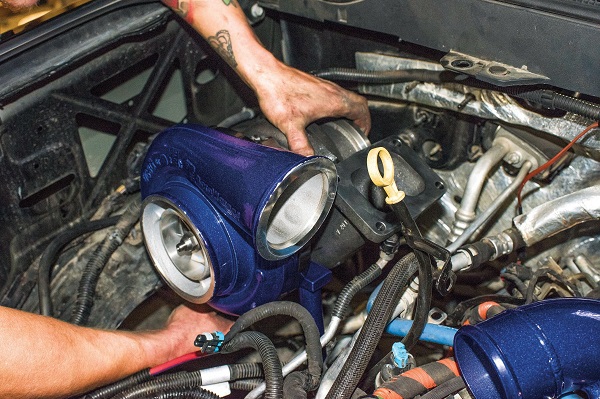The automotive industry has seen a ton of improvements over the past few decades, and a lot of focus has been placed on reducing emissions while increasing power. One of the most revolutionary advancements to accomplish all of this are turbocharged and supercharged engines. Both performance turbocharger and supercharger devices do this by reducing the overall size of the engine, yet ensuring it gets the same amount of air a bigger engine would. And if you know anything about engines, then you know that the way they produce power is by mixing air and fuel. Contrary to what most people think, getting enough oxygen into the engine is more difficult than fuel. This is why people install aftermarket exhaust systems, snorkels when off-roading, and forced induction systems.
So what’s the difference between a performance turbocharger and supercharger engine? Which one is better for you? And how much power do they both add? These are some of the questions I’ll address in this article so that if you’re interested in adding more power to your vehicle, you know what to look for.
Turbocharged vs Supercharged Engines
Key Differences
Superchargers are basically air compressors that increase the density or pressure of the air going inside an engine, thus providing more oxygen to burn fuel with. Back in the day, superchargers were powered by the crankshaft, usually by belt, chain or gear. On the other hand, turbochargers are basically superchargers that are powered by a turbine in the exhaust rather than the crankshaft. Turbochargers were initially called turbosuperchargers, and they were mainly used on radial aircraft engines to improve power at high altitudes, where oxygen is scarcer. Their name was then shortened to turbochargers, and later on turbo.
Which is Better?
While both superchargers and turbochargers improve power and fuel economy, each comes with its own advantages and disadvantages. The main advantage of turbochargers is that they allow your vehicle to make the most out of the free energy that would be lost in the exhaust system. While the turbocharger turbine increases exhaust backpressure, which often results in adding extra workload to the engine, the overall loss is far less in comparison to that of a supercharger. However, superchargers provide their increase in performance instantly, whereas turbos have a bit of delay due to the turbine needing some exhaust pressure to start spinning. That being said, if you’re looking for a quicker response, you should consider a supercharger. However, if you don’t want to sacrifice on fuel economy, then a turbocharger is probably the better choice.
How Much Power Do They Add?
As briefly aforementioned, the biggest limiting factor that decides how much power an engine can gush out is oxygen. More oxygen equals more power, plain and simple. This is due to the fact that fuel-injection technology is quite advanced nowadays, so your vehicle is capable of supplying as much fuel as needed with the amount of oxygen available in the cylinders. Naturally aspirated engines can get as much as 15 PSI, so if a supercharger or turbocharger adds “only” 7 more PSI, that’s almost 50% more oxygen and power. While it may seem pretty straightforward on paper, it’s actually slightly more complicated.
Compressing air results in increased heat, and if you take into account the extra pressure, the engine may get damaged. For that reason, the timing needs to be somewhat adjusted, otherwise, your engine may end up wasting some of the fuel, and thus, lose some of the potential power gains. To avoid this, supercharged and turbocharged engines also feature intercoolers to reduce the increased heat. So at the end of the day, rather than increasing the power by 50%, the more realistic power increase is somewhere between 30% and 40%.
How Do They Improve Fuel Economy?
When operational, both superchargers and turbochargers burn more fuel. However, when they’re attached to an engine that’s too small to adequately meet your vehicle’s demands in terms of acceleration, they help save fuel during the low-power cruising that makes up for most of our driving. This is mainly done by reducing the pumping losses that happen when big-displacement engines run at 5% throttle or less. The reason for the pumping losses are a result of air having a difficult time going through a mostly closed throttle. And for smaller sized engines to produce as much power, they might require a 20% throttle opening, resulting in less pumping work.
Can I Add One to My Vehicle?
There are quite a few aftermarket supercharger and turbocharger kits. Generally, bolting on a supercharger is easier, and it only requires a bracket, belt, crank pullet, and integration into your vehicle’s air intake system. In some cases, you might need to add an intercooler as well. On the other hand, a turbocharger needs to be integrated into the air intake system, exhaust system, and in some cases you’ll also need to install an intercooler. Regardless, you’ll probably have an easy time finding both turbochargers and superchargers for your vehicle online, and in many aftermarket engine parts dealerships.



